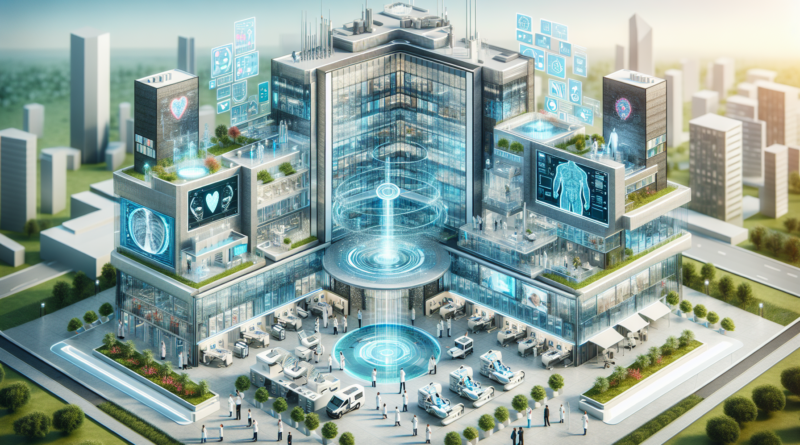Innovations in Healthcare Facilities
The landscape of healthcare real estate is undergoing a significant transformation. As medical needs evolve, so do the facilities that house these services. The future of healthcare real estate is not just about expanding physical spaces but also about integrating technology and sustainable practices to create environments that enhance patient care and operational efficiency.
Technological Integration
One of the most profound changes in healthcare facilities is the integration of technology. Modern medical buildings are being designed with smart technologies that improve patient outcomes and streamline operations. For instance, telemedicine suites are becoming a staple, allowing patients to connect with healthcare providers remotely. These facilities are equipped with high-speed internet and advanced communication tools to facilitate seamless virtual consultations.
Moreover, the use of IoT (Internet of Things) devices in hospitals is on the rise. These devices help in monitoring patient vitals in real-time, ensuring timely interventions. Smart beds, wearable health monitors, and automated medication dispensers are just a few examples of how technology is being woven into the fabric of healthcare real estate.
Sustainable Design
Sustainability is another critical aspect of future healthcare real estate. With increasing awareness of environmental issues, medical facilities are being designed with eco-friendly materials and energy-efficient systems. Green roofs, solar panels, and rainwater harvesting systems are becoming common features in new healthcare buildings. These sustainable practices not only reduce the carbon footprint but also lead to significant cost savings in the long run.
Sustainability in Healthcare
Incorporating sustainable design in healthcare facilities is crucial for reducing environmental impact and operational costs. By using renewable energy sources and eco-friendly materials, healthcare providers can create healthier environments for patients and staff while contributing to global sustainability efforts.
The design of healthcare facilities is increasingly focusing on the patient experience. Future medical buildings are being constructed with the patient’s comfort and convenience in mind. This includes creating spaces that are not only functional but also aesthetically pleasing and calming. Natural light, soothing color schemes, and comfortable furnishings are essential elements of patient-centric design.
Additionally, wayfinding systems are being improved to help patients navigate complex hospital layouts with ease. Digital signage and interactive kiosks provide clear directions and information, reducing stress and confusion for patients and visitors alike.
Flexible Spaces
Flexibility is a key consideration in the design of future healthcare facilities. As medical practices and technologies evolve, so too must the spaces that accommodate them. Modular construction techniques are being employed to create adaptable spaces that can be reconfigured as needed. This flexibility allows healthcare providers to respond quickly to changing demands, such as the need for additional isolation rooms during a pandemic.
Adaptable Healthcare Spaces
The ability to adapt quickly to changing healthcare needs is essential. Modular construction and flexible design allow medical facilities to reconfigure spaces efficiently, ensuring they can meet the demands of any situation, from routine care to emergency responses.
Future healthcare real estate is also focusing on integrating with the community. Medical facilities are being designed to serve as community hubs, offering services beyond traditional healthcare. This includes wellness programs, educational workshops, and fitness centers that promote overall well-being. By becoming more integrated with the community, healthcare facilities can foster stronger relationships and improve public health outcomes.
Challenges and Opportunities
While the future of healthcare real estate is promising, it is not without challenges. The high cost of implementing advanced technologies and sustainable practices can be a barrier for some healthcare providers. However, the long-term benefits, such as improved patient outcomes and reduced operational costs, make these investments worthwhile.
Overcoming Challenges
Despite the challenges, the future of healthcare real estate offers numerous opportunities for innovation. By embracing technology, sustainability, and patient-centric design, healthcare providers can create facilities that meet the needs of tomorrow’s patients while overcoming today’s obstacles.
In conclusion, the future of healthcare real estate is bright, with innovations that promise to transform the way medical facilities operate. By focusing on technology, sustainability, patient experience, flexibility, and community integration, healthcare providers can create environments that not only meet the needs of today but also anticipate the demands of the future. As these trends continue to evolve, the potential for improving healthcare delivery and patient outcomes is immense.


